Search
Search Results
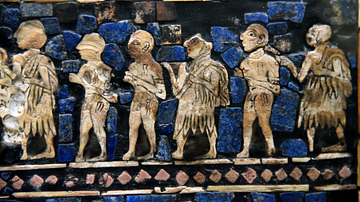
Image
Detail of the War Scene of the Standard of Ur Showing Prisoners of War
This is a detail of the so-called "War Scene" of the Standard of Ur. This detail is the right end of the top register. Sumerian soldiers wearing flounced skirts lead prisoners of wars. The captives are naked and their bodies have wounds with...
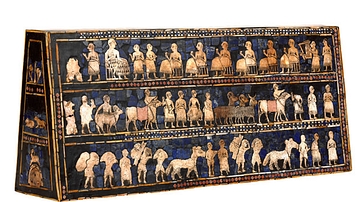
Image
The Standard of Ur
From Ur, southern Iraq, about 2600-2400 BC This object was found in one of the largest graves in the Royal Cemetery at Ur, lying in the corner of a chamber above the right shoulder of a man. Its original function is not yet understood...
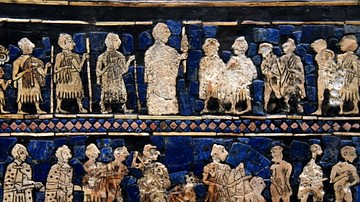
Image
Detail of the War Scene of the Standard of Ur
Detail (middle part of the top and middle registers) of the so-called "War Scene" of the Standard of Ur, a (reconstructed) hollow box, the precise purpose of which is unknown. From the Royal Cemetry of Ur, Ur, Sothern Mesopotamia, modern-day...
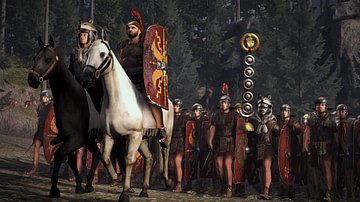
Image
Roman Officers & Standard-Bearers
An artist's representation of how frontline officers and legionaries of the Roman army may have looked in action.
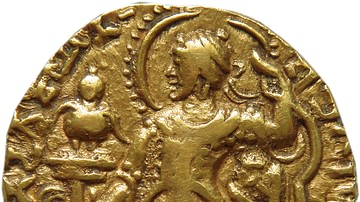
Image
Samudragupta Coin: Standard Type
This coin issued by Emperor Samudragupta (335/350 – 370/380 CE) of the Gupta dynasty shows him wearing a Scythian-style coat, trousers and cap and Indian-style necklace and earrings. He has a halo around his head. The standard shown in the...
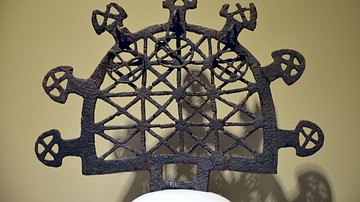
Image
Hattian Ceremonial Standard
Sun disk made of bronze used as a ceremonial standard, from the pre-Hittite period (Hatti). These objects were used in religious ceremonies and were found in the royal tombs of Hattian times unearthed in Alacahöyük, 2500-2250 BCE. Hatti kings...

Image
Standard-bearer of Legio XIV Gemina
Tombstone of Gnaeus Musius, standard-bearer of Legio XIV Gemina, 1st century CE.
Landesmuseum, Mainz.
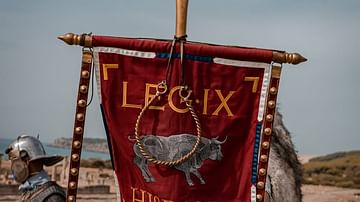
Image
Recreated Standard of IX Hispana
Standard of Legion IX Hispana Punta Umbría, a Roman army reeanctor group.
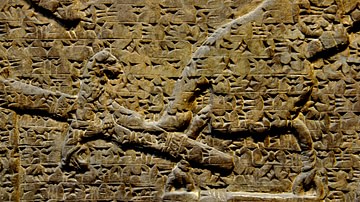
Image
Standard Inscription of King Ashurnasirpal II
A close-up of the "Standard Inscription" of the Assyrian king Ashurnasirpal II, from the North-West palace at Nimrud (ancient Kalhu; biblical Calah), northern Mesopotamia, modern-day Iraq, Neo-Assyrian Empire, 865-860 BCE. The British Museum...

Definition
Roman Cavalry
Cavalry, although never replacing infantry as the mainstay of the Roman army, could provide useful cover on the flanks of armies, could be used as a shock tactic to cause disruption to enemy infantry formations, and could pursue an enemy...